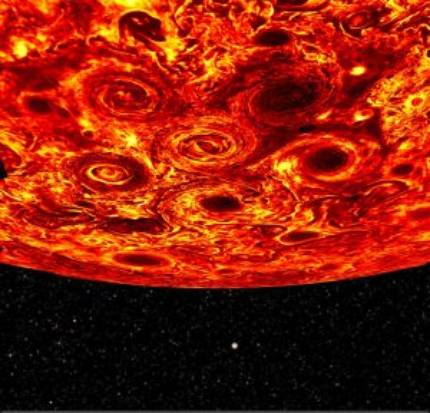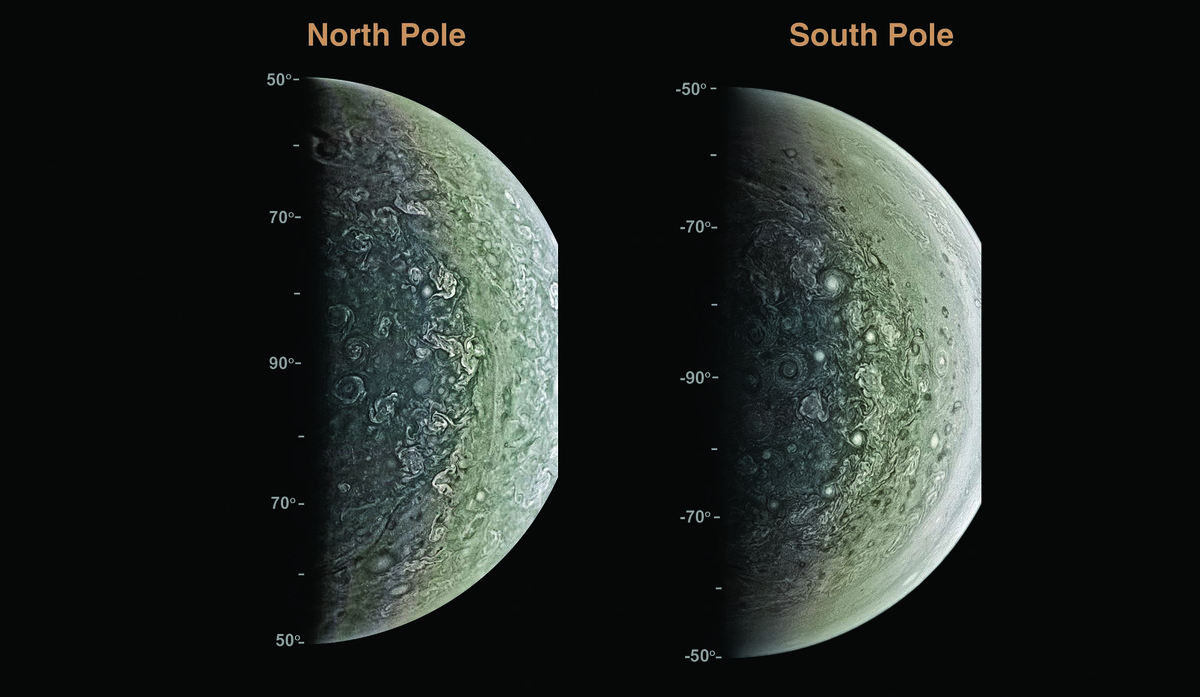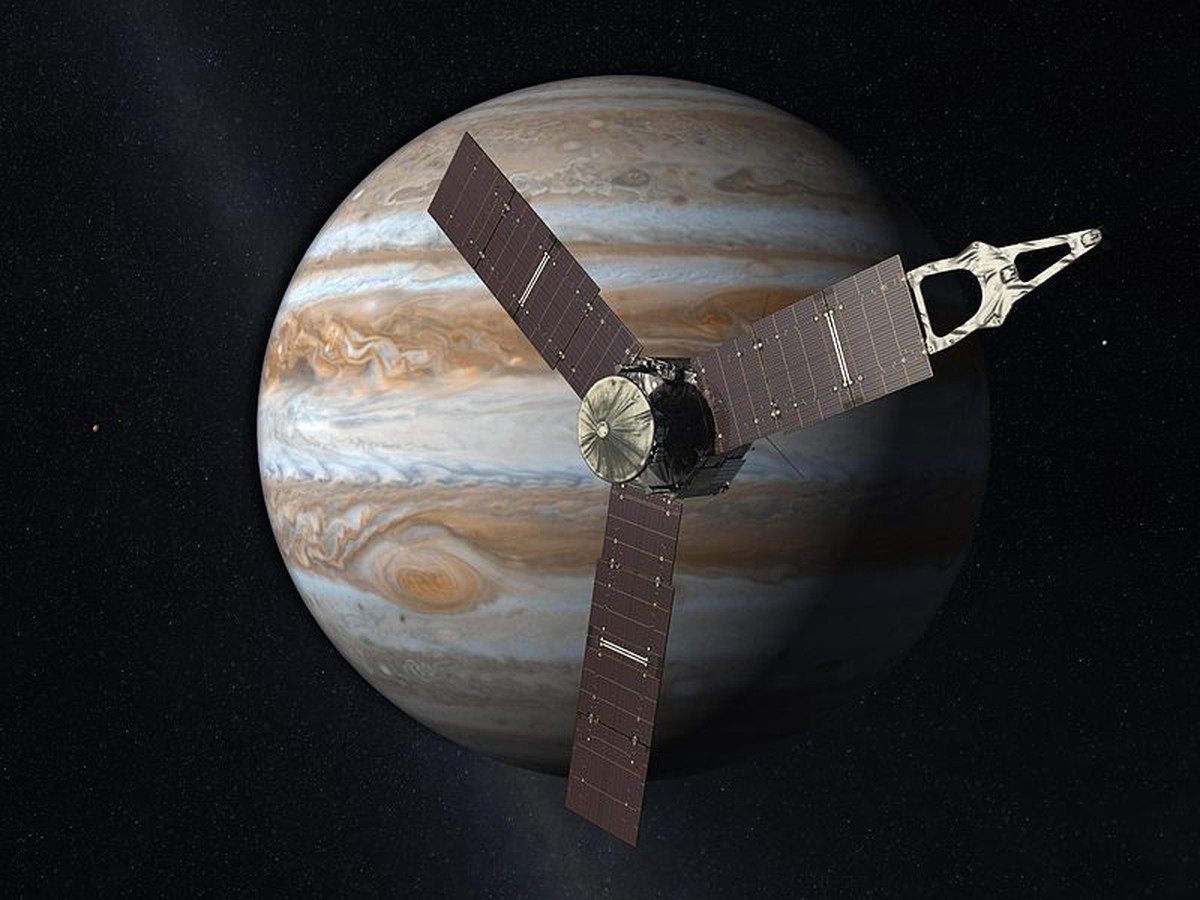A deeper look at Jupiter
2018/03/07 Etxebeste Aduriz, Egoitz - Elhuyar Zientzia Iturria: Elhuyar aldizkaria

Four articles published in the journal Nature detail some aspects of Jupiter (1, 2, 3, 4). With the data taken in the Juno mission, we analyze the gravitational field of Jupiter, atmospheric flows, internal composition, polar cyclones, etc.
Although much research has been done on Jupiter's skin, it is not well known what happens under these dark, luminous bands. The first three articles have shown that precise measurements of the gravitational field can obtain much information about the interior of the planet.

Jupiter's gravitational field is asymmetric from north to south, which is not to be expected in a fluid like Jupiter. It is concluded that this asymmetry is due to atmospheric and interior air flows. On the other hand, they have seen that the currents seen on the surface as bands, are not a superficial account, but reach 3,000 kilometers of depth. They have also calculated that Jupiter's cloudy atmosphere accounts for 1% of the planet's mass. And they have seen that the fluid interior formed by hydrogen and helium rotates like a solid.
Finally, in the fourth work the poles have been analyzed. It is observed that at the poles the cyclones adopt permanent polygonal forms. In the North Pole, eight cycles surround another cyclone and in the South Pole there are another five around a cyclone. They still do not know how these cyclones form and last.

Gai honi buruzko eduki gehiago
Elhuyarrek garatutako teknologia





